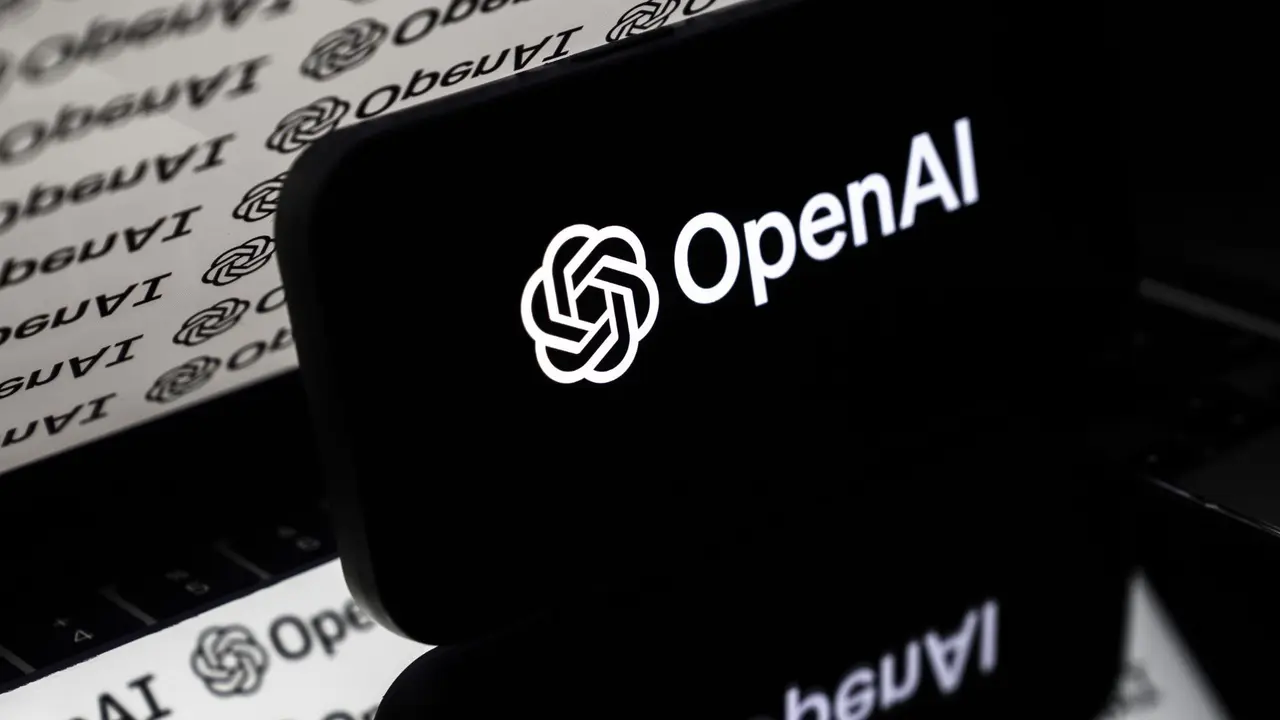Cornell Researchers Develop AI-Powered Smart Clothing for Exercise Tracking
2 Sources
2 Sources
[1]
New smart clothing tracks a person's posture and exercise routine
Cornell UniversityApr 9 2025 Researchers at Cornell University have developed a new type of smart clothing that can track a person's posture and exercise routine but looks, wears - and washes - just like a regular shirt. The new technology, called SeamFit, uses flexible conductive threads sewn into the neck, arm and side seams of a standard short-sleeved T-shirt. The user does not need to manually log their workout, because an artificial intelligence pipeline detects movements, identifies the exercise and counts reps. Afterward, the user simply removes a circuit board at the back neckline, and tosses the sweaty shirt into the washing machine. Most existing body-tracking clothing is tight and restrictive or embedded with chunky sensors, according to Catherine Yu, doctoral student and lead researcher on the project. We were interested in how we can make clothing smart without making it bulky or unusable, and to push the practicality so that people can treat it the way they would usually treat their clothing." Catherine Yu, doctoral student and lead researcher on the project Alternatively, athletes can choose fitness trackers, like smartwatches or rings, but these are extra devices that people may not want to wear while exercising and can't track movement across the entire body. The study, "SeamFit: Towards Practical Smart Clothing for Automatic Exercise Logging," published in the Proceedings of the ACM on Interactive, Mobile, Wearable and Ubiquitous Technologies, and will be presented at the UbiComp/ISWC 2025 meeting in October. To test the shirts' performance, the team recruited volunteers, who did a series of 14 exercises - including lunges, sit-ups and biceps curls - while wearing SeamFit. Without any calibration or training for each user, SeamFit's model classified the exercises with 93.4% accuracy and successfully counted reps, with counts that, on average, were off by less than one. SeamFit works because when people exercise, the threads' capacitance - their ability to store charge - changes as the threads move, deform and interact with the human body. The circuit board at the back neckline measures the capacitances and transmits them through a Bluetooth connection to a computer. A customized, lightweight signal-processing and machine-learning pipeline then deciphers the movements. More broadly, this type of technology could assist with human-AI interaction, because by tracking human movements and activities, AI can better understand when to interact and when to wait - such as when someone is eating or sleeping. "While this paper demonstrated the approach for a simple garment, we believe it can easily be adapted to a wide range of garments and could take advantage of the complex seam patterns of advanced sportswear," said co-author François Guimbretière, professor of information science. Cornell University Journal reference: Yu, T. C., et al. (2025). SeamFit: Towards Practical Smart Clothing for Automatic Exercise Logging. Proceedings of the ACM on Interactive Mobile Wearable and Ubiquitous Technologies. doi.org/10.1145/3712287.
[2]
Nice flex: AI-powered smart clothing logs posture and exercises
Researchers at Cornell have developed a new type of smart clothing that can track a person's posture and exercise routine but looks, wears -- and washes -- just like a regular shirt. The new technology, called SeamFit, uses flexible conductive threads sewn into the neck, arm and side seams of a standard short-sleeved T-shirt. The user does not need to manually log their workout, because an artificial intelligence pipeline detects movements, identifies the exercise and counts reps. Afterward, the user simply removes a circuit board at the back neckline, and tosses the sweaty shirt into the washing machine. The team envisions that SeamFit could be useful for athletes, fitness enthusiasts and patients engaged in physical therapy. Most existing body-tracking clothing is tight and restrictive or embedded with chunky sensors, according to Catherine Yu, a doctoral student in the field of information science and lead researcher on the project. "We were interested in how we can make clothing smart without making it bulky or unusable," Yu said, "and to push the practicality, so that people can treat it the way they would usually treat their clothing." Alternatively, athletes can choose fitness trackers, like smartwatches or rings, but these are extra devices that people may not want to wear while exercising, and can't track movement across the entire body. "Not everyone is willing to try out a new wearable form factor, but people will have clothes on," said co-author Cheng Zhang, assistant professor of information science in the Cornell Ann S. Bowers College of Computing and Information Science. "We provide a very neat form factor that is always on you." Their study,"SeamFit: Towards Practical Smart Clothing for Automatic Exercise Logging," published in March in the Proceedings of the ACM on Interactive, Mobile, Wearable and Ubiquitous Technologies, and will be presented at the UbiComp/ISWC 2025 meeting in October in Espoo, Finland. Most mass-produced clothing has seams, which Yu realized could be exploited to make a comfortable, affordable piece of smart clothing. She constructed three SeamFit shirts -- in small, medium and large -- using a home sewing machine to attach conductive threads on top of the seams. The three sizes allowed users to choose a looser or tighter fit, but did complicate the process of interpreting each user's movements. To test the shirts' performance, the team recruited 15 volunteers, who did a series of 14 exercises -- including lunges, sit-ups and biceps curls -- while wearing SeamFit. Without any calibration or training for each user, SeamFit's model classified the exercises with 93.4% accuracy and successfully counted reps, with counts that, on average, were off by less than one. SeamFit works because when people exercise, the threads' capacitance -- their ability to store charge -- changes as the threads move, deform and interact with the human body. The circuit board at the back neckline measures the capacitances and transmits them through a Bluetooth connection to a computer. A customized, lightweight signal-processing and machine-learning pipeline then deciphers the movements. After the workouts, Yu washed and dried the shirts at home. The project is a new iteration of SeamPose, a previous effort to track body postures using conductive threads in eight seams of a long-sleeve T-shirt. The team envisions that this type of unobtrusive smart clothing could be especially useful for athletes logging their exercise routines and for physical therapists monitoring the progress of patients at home. More broadly, this type of technology could assist with human-AI interaction, because by tracking human movements and activities, AI can better understand when to interact and when to wait -- such as when someone is eating or sleeping. Enabling AI to understand human activity is the main focus of Zhang's Smart Computer Interfaces for Future Interactions (SciFi) Lab, which develops new, AI-powered wearable sensing systems, to enable AI to comprehend human activities and intentions in everyday settings and provide support when needed. "While this paper demonstrated the approach for a simple garment, we believe it can easily be adapted to a wide range of garments and could take advantage of the complex seam patterns of advanced sportswear," said co-author François Guimbretière, professor of information science in Cornell Bowers CIS and the multicollege Department of Design Tech. To create SeamFit, Yu set up a "little sewing factory" in the lab. However, she is currently exploring how the manufacturing process could be affordably scaled up, using industrial serger machines -- which sew and make seams using three or four threads simultaneously -- and more robust conductive threads. "By just replacing a single thread in this mass manufacturing process, all of the clothing could easily become smart and be able to have this motion tracking capability," Yu said. "I'm imagining one day, you open your closet and there's really no difference between smart and nonsmart clothing."
Share
Share
Copy Link
Cornell University researchers have created SeamFit, a new type of smart clothing that uses AI to track posture and exercise routines while maintaining the look and feel of regular clothing.

Cornell Researchers Unveil SeamFit: AI-Powered Smart Clothing
Researchers at Cornell University have developed a groundbreaking smart clothing technology called SeamFit, which can track a person's posture and exercise routine while maintaining the appearance and functionality of regular clothing. This innovative approach to wearable technology aims to revolutionize how we monitor physical activity and interact with AI systems
1
2
.How SeamFit Works
SeamFit utilizes flexible conductive threads sewn into the neck, arm, and side seams of a standard short-sleeved T-shirt. These threads change their capacitance - their ability to store charge - as they move and interact with the human body during exercise. A small circuit board at the back neckline measures these changes and transmits the data via Bluetooth to a computer
1
.The real magic happens through an artificial intelligence pipeline that processes the data:
- Detects movements
- Identifies specific exercises
- Counts repetitions
This system eliminates the need for manual logging of workouts, providing a seamless user experience
2
.Practical Design and Usability
What sets SeamFit apart from existing smart clothing solutions is its practicality. Catherine Yu, the lead researcher and doctoral student on the project, emphasized their focus on making the clothing smart without compromising its usability:
"We were interested in how we can make clothing smart without making it bulky or unusable, and to push the practicality so that people can treat it the way they would usually treat their clothing."
1
Unlike other body-tracking garments that are often tight, restrictive, or embedded with bulky sensors, SeamFit looks and feels like a regular T-shirt. Users can simply remove the circuit board and wash the shirt normally after use
2
.Related Stories
Impressive Performance in Testing
To evaluate SeamFit's effectiveness, the research team conducted tests with 15 volunteers performing 14 different exercises, including lunges, sit-ups, and biceps curls. The results were remarkable:
- 93.4% accuracy in classifying exercises
- Rep counts were off by less than one on average
- Consistent performance across small, medium, and large shirt sizes
- No need for individual user calibration or training
1
2
Potential Applications and Future Developments
The researchers envision several potential applications for SeamFit technology:
- Athletes and fitness enthusiasts for precise workout tracking
- Physical therapy patients for at-home progress monitoring
- Enhancing human-AI interaction by providing context for AI systems
1
François Guimbretière, a professor of information science and co-author of the study, believes that this approach can be adapted to a wide range of garments, potentially taking advantage of complex seam patterns in advanced sportswear
2
.Catherine Yu is currently exploring ways to scale up the manufacturing process using industrial serger machines and more robust conductive threads. This could lead to mass production of smart clothing that is indistinguishable from regular garments
2
.As wearable technology continues to evolve, SeamFit represents a significant step towards seamlessly integrating AI and fitness tracking into our daily lives, potentially transforming the way we approach exercise monitoring and human-AI interactions.
References
Summarized by
Navi
Related Stories
MIT Develops Fiber Computer for Smart Clothing: A Breakthrough in Wearable Technology
27 Feb 2025•Technology

Smart Insoles: Revolutionizing Sports Performance and Health Monitoring with AI-Powered Wearable Technology
27 Mar 2025•Technology

Starfish-Inspired Wearable Tech with AI Revolutionizes Heart Health Monitoring
03 Apr 2025•Science and Research

Recent Highlights
1
AI Chatbots Sway Voters More Effectively Than Traditional Political Ads, New Studies Reveal
Science and Research

2
Google AI glasses set to launch in 2026 with Gemini and Android XR across multiple partners
Technology

3
EU Launches Antitrust Probe Into Google's AI Training Practices and Content Usage
Policy and Regulation




